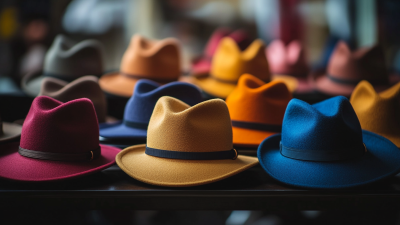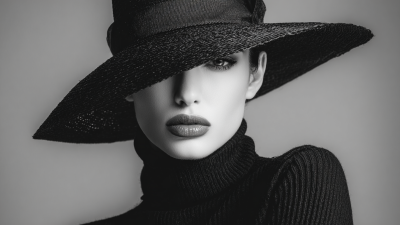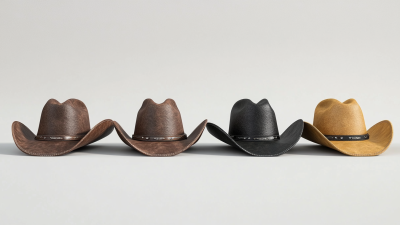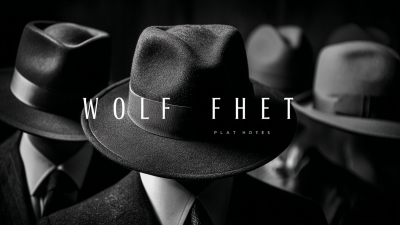Exploring the Rising Trend of Fashion Hats: How Market Demand Surged 40% in 2023
In recent years, the fashion industry has witnessed a remarkable transformation, with an unprecedented surge in the popularity of fashion hats. As an essential accessory that marries style and functionality, fashion hats have captured the attention of consumers worldwide. In 2023 alone, market demand for these stylish headpieces skyrocketed by an astonishing 40%, reflecting a shift in consumer preferences towards unique and statement-making accessories. This rising trend is fueled by a blend of social media influence, celebrity endorsements, and a growing desire for individuality in personal style. As fashion hats evolve from mere protective gear to bold expressions of creativity, understanding their appeal and how to incorporate them into everyday outfits has never been more crucial. This article delves into the dynamics behind the growing trend of fashion hats, providing insights on how to embrace this accessory revolution and make a fashionable statement in any setting.

The Resurgence of Fashion Hats: Key Factors Driving Popularity in 2023
The resurgence of fashion hats in 2023 can be attributed to several key factors driving their popularity. According to a recent report from the Fashion Industry Association, the global market for fashion hats has surged by 40%, indicating a robust consumer demand that retailers are eager to capitalize on. This uptrend can largely be credited to the increasing emphasis on personal style and self-expression, particularly among younger demographics. Gen Z and Millennials are particularly drawn to unique accessories that allow them to differentiate themselves, and hats have emerged as a versatile option that complements various outfits, from casual to formal.

Another factor contributing to the popularity of fashion hats is the rise of social media influencers and celebrity endorsements. Data from a study by the Trend Forecasting Institute showed that mentions of fashion hats on platforms like Instagram and TikTok have increased by over 200% year-over-year. This surge in visibility encourages consumers to experiment with their looks and embrace trends popularized by their favorite icons. Additionally, the recent focus on sustainability has led brands to explore eco-friendly materials and production methods for hats, aligning with the preferences of environmentally conscious shoppers. As a result, the fashion hat market not only caters to aesthetic desires but also resonates with the values of today’s consumers.
Consumer Insights: Who is Buying Fashion Hats and Why?
The rising trend of fashion hats in 2023 has caught the attention of various consumer demographics, significantly altering purchasing behaviors. One of the main groups driving this surge are millennials, who are increasingly drawn to unique and bold accessories that allow them to express their individuality. These consumers are not just looking for functional items but rather statement pieces that enhance their overall style. The integration of hats into social media platforms and influencer partnerships has also amplified their appeal, making them a must-have accessory.
In addition to millennials, Gen Z is emerging as a major force in the fashion hat market. This younger demographic values sustainability and seeks out brands that promote ethical production practices. As a result, many companies have adapted their offerings to include eco-friendly materials and transparent sourcing. Moreover, the versatility of fashion hats allows them to be worn across various settings, from casual outings to more formal events, broadening their appeal and driving demand. This blend of fashion consciousness and ethical considerations is reshaping the landscape of hat purchases, creating a diverse consumer base eager for new styles and innovations.
The Influence of Celebrity Endorsements on Hat Trends
The influence of celebrity endorsements on fashion trends, particularly in the realm of hats, cannot be overstated. As the global hats and caps market size is poised to grow from USD 0.91 billion in 2025 to an estimated USD 1.3 billion by 2033, with a compound annual growth rate (CAGR) of 4.51%, it highlights a significant shift in consumer preferences influenced largely by celebrities. High-profile figures often leverage their social media platforms to showcase their unique styles, which in turn cultivates consumer interest and drives demand for specific fashion items, including hats.
Celebrities such as Savannah James have recently emerged as strong influencers in this category, further elevating niche trends like the Labubu doll phenomenon. Through their visibility and engagements during events or casually in everyday settings, celebrities effectively shape consumer perceptions and purchasing behaviors. This dynamic underscores the crucial role that celebrity endorsements play in the fashion industry, transforming hats from simple accessories into style essentials that reflect personal identity and status in a globalized fashion landscape.
Exploring the Rising Trend of Fashion Hats: How Market Demand Surged 40% in 2023
| Category | 2022 Sales Volume (Units) | 2023 Sales Volume (Units) | % Increase | Celebrity Influence Score |
|---|---|---|---|---|
| Baseball Caps | 1,200,000 | 1,680,000 | 40% | 8.5 |
| Fedoras | 600,000 | 840,000 | 40% | 7.3 |
| Bucket Hats | 400,000 | 560,000 | 40% | 6.8 |
| Sun Hats | 300,000 | 420,000 | 40% | 5.9 |
| Beanies | 500,000 | 700,000 | 40% | 6.5 |
Seasonal Trends: How Weather Impacts Hat Sales
Seasonal changes play a crucial role in influencing consumer behavior, particularly in fashion accessories like hats. As temperatures rise or fall, the demand for different styles of hats fluctuates. For instance, during the summer months, lightweight and breathable materials become popular, leading to a surge in sales of straw hats, caps, and visors. Conversely, the winter season ramps up interest in warmer options such as beanies, fedoras, and wool hats. Retailers often tailor their inventory to capitalize on these seasonal trends, ensuring their selections align with what consumers seek in relation to the weather.
Moreover, weather patterns have a profound effect on the timing and volume of hat purchases. Unseasonably warm winters can lead to increased sales of lighter hats, while particularly cold or snowy conditions boost interest in insulated or stylish warm headwear. This adaptability highlights the importance of monitoring climate changes and seasonal trends, as savvy brands and retailers can leverage this data to enhance their marketing strategies, optimize stock levels, and ultimately meet the evolving demands of the market. National campaigns often align with these shifts, emphasizing the functional and fashionable aspects of hats throughout the year, making them a staple accessory in any wardrobe.
Sustainability in Fashion Hats: A Growing Demand for Eco-friendly Options
The fashion hat industry has witnessed a remarkable shift towards sustainability in 2023, reflecting consumers' growing demand for eco-friendly options. With an increasing awareness of environmental issues, shoppers are now more inclined to choose hats crafted from sustainable materials such as organic cotton, recycled fibers, and innovative biodegradable materials. This trend not only caters to the ethical considerations of modern consumers but also represents a significant opportunity for brands to differentiate themselves in a competitive market.

Moreover, sustainable fashion hats often come with robust storytelling and brand philosophies that resonate with eco-conscious buyers. Many brands are investing in transparency, sharing their sourcing practices and the ecological impact of their products. This commitment to sustainability not only enhances brand loyalty but also encourages a circular economy, with options for recycling or upcycling hats at the end of their life cycle. As a result, the rising trend of eco-friendly fashion hats continues to thrive, driving a more conscious approach within the fashion industry.
Related Posts
-

Essential Guide to Sourcing Fashion Hats for Your Global Business Needs
-

Mastering the Art of Sourcing Unique Fashion Hats: A Comprehensive Guide for Global Buyers
-

How to Choose the Best Fashion Hats: Insights from Market Trends and Sales Data
-

Exploring the Benefits of Post Purchase Support and Repair Costs for Cowboy Hat Styles
-

Understanding the Common Issues Faced by Consumers Choosing Mens Felt Hats
-

The Complete Guide to Finding the Best Wool Felt Hats for Global Buyers
